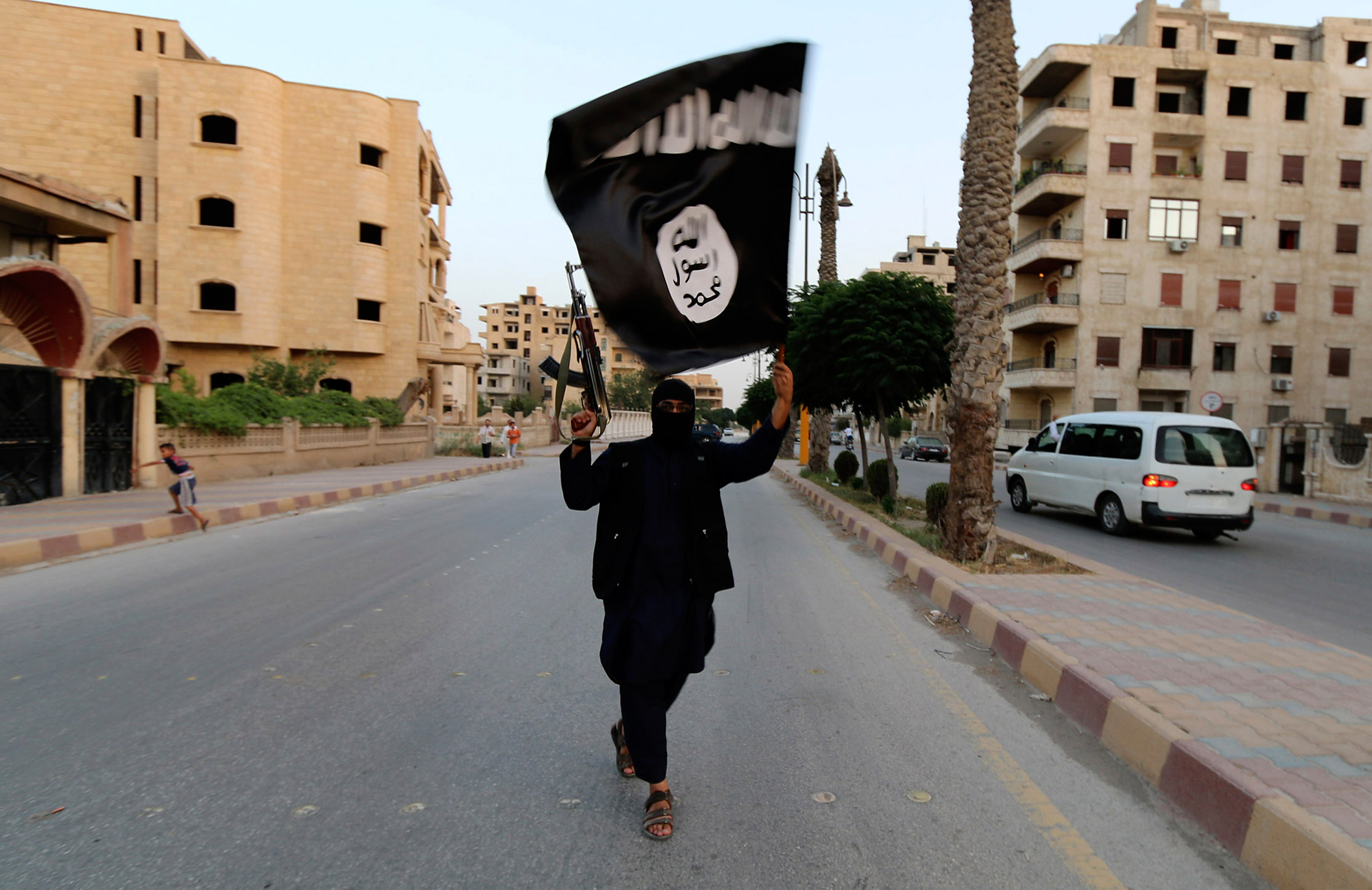
The U.S.-led air campaign against the Islamic State of Iraq and Greater Syria (ISIS) has scored some points in Syria, weakening ISIS’s oil infrastructure and revenue and keeping the group out of Kobani. Despite these tactical gains, however, the campaign has had serious local side effects that have undermined the broader, long-term objective of degrading and destroying ISIS in Syria and preventing the al-Qaeda affiliate Jabhat al-Nusra, from replacing or thriving alongside ISIS. Unfortunately, the coalition campaign’s priorities are not aligned with those of the only parties capable of beating Sunni jihadism in Syria — Syrian nationalist groups enjoying broad Sunni support.
Ironically, the coalition campaign has contributed to the near collapse of nationalist forces in northern Syria who, despite their imperfections, were ISIS’s most effective rivals and competed with Jabhat al-Nusra for leadership of the insurgency. Rather than work with the nationalists as partners against ISIS in the north (where jihadists are strongest), the U.S. has excluded them from the coalition military effort. At the same time, U.S. air strikes on jihadists have spared the regime’s forces and inadvertently killed Syrian civilians. The U.S. also insists nationalist forces fight the jihadists — not the regime — making them appear as U.S. agents in the eyes of the Syrian people.
As a result, morale among nationalist fighters in northern Syria has plummeted. Many have defected to the jihadists, who are taking advantage of growing Syrian disillusionment with the U.S. and U.S.-aligned rebels to build influence among the insurgency and the people. Since the coalition campaign started, Jabhat al-Nusra has driven nationalist forces out of much of their core territory in northern Syria, and ISIS continues to threaten those that remain. While nationalists have fared better in the south, they still face a potential jihadist threat there.
Meanwhile, ISIS remains essentially unchallenged in its heartland in northern Syria, despite repeated U.S. air strikes. We may take comfort in believing that ISIS’s repugnant ideology and behavior contain the seeds of its own demise, but that is not likely to reassure its local opponents. And it misses the point: ISIS offers conquered populations the choice between submission — which brings a sense of order and some protection from regime violence — or futile resistance and death. Unfortunately, few rational Syrians in the “caliphate” would confront ISIS, as long as the only alternatives are chaos or the Syrian regime.
As it is currently envisaged, the promised U.S. train-and-equip program is unlikely to reverse the nationalists’ losses or jihadists’ gains in northern Syria. Given that participants will reportedly be tasked with fighting the U.S.’s jihadist enemies but not the regime, Syrian civilians and fighters will see them as U.S. mercenaries, and the jihadists as more acceptable. Instead, U.S. interests would be better served by a two-pronged approach in northern and southern Syria, helping nationalist rebels contain ISIS and compete with Jabhat al-Nusra for control of the insurgency.
In the south, nationalists have fared better at keeping ISIS out and Jabhat al-Nusra in check, partly due to a coherent, rational U.S.-led support program operating covertly out of Jordan. By tightly controlling weapon and funding streams and working with Jordan’s intelligence services to understand the insurgent landscape, the U.S. has helped nationalists in the south avoid the fragmentation, infighting, and lawlessness that weakened them and benefited the jihadists in northern Syria. Substantially increasing material support for nationalists in the south would allow them to dissociate from and compete effectively with Jabhat al-Nusra for leadership of the insurgency, keep ISIS from expanding southward, and prepare for an eventual offensive against the jihadists. Helping southern groups apply military pressure on nearby Damascus would also facilitate a negotiated settlement with amenable regime elements, removing regime violence as a key driver of jihadism in Syria.
The situation in northern Syria is less promising but not hopeless. Even if the coalition wants to avoid confronting regime forces, it can and should concentrate air strikes closer to ISIS’s front lines with the nationalist insurgency, helping the latter block ISIS advances in cooperation with local Kurdish forces when possible. The southern model, in which funds and arms are tightly controlled by the U.S. and flow directly to trusted rebel commanders, should be applied in the north to the extent that it’s possible.
A strategy to beat the jihadists and make sure they stay beaten must be locally driven, led by nationalist forces supported by the Sunni population that forms the insurgency’s social base. Relying on air strikes alone and treating nationalist groups as agents rather than partners violates this principle. It also effectively delegates the fight against the Sunni jihadists of ISIS and Jabhat al-Nusra to a heavily Alawite regime and Shi’ite jihadist groups, including Hizballah. Sadly, this only reinforces ISIS and Jabhat al-Nusra’s dangerous but increasingly resonant sectarian narrative: that Sunni Muslims are under siege by oppressive regional minorities, Iran and even the U.S. itself. A coalition strategy that strengthens this narrative would be a tragic failure.
Read next: U.S. Concerned by Iran’s Growing Role in Fight Against ISIS
More Must-Reads from TIME
- How the Economy is Doing in the Swing States
- Harris Battles For the Bro Vote
- Our Guide to Voting in the 2024 Election
- Mel Robbins Will Make You Do It
- Why Vinegar Is So Good for You
- You Don’t Have to Dread the End of Daylight Saving
- The 20 Best Halloween TV Episodes of All Time
- Meet TIME's Newest Class of Next Generation Leaders
Contact us at letters@time.com